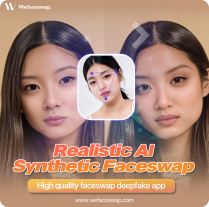AI Face Swap Tools: What You Need to Know
AI Face Swap Tools: What You Need to Know
Blog Article
The Ethical Implications of AI Face Swap
The change of face exchange technology from a cool novelty to a main-stream trend is nothing in short supply of fascinating. Originating as an enjoyable filter on early photograph applications, experience swaps have today become an integrated part of social media marketing material generation and also skilled industries. With its quick evolution and climbing popularity, deepfake technology has fascinated thousands worldwide. Platforms like Face Exchange have played a major role in this phenomenon, offering sophisticated and progressive face swapping practices which can be easy to use.

Deepswap is a cutting-edge heavy learning technology that enables for supreme quality face trades with just a couple of clicks. It employs synthetic intelligence (AI) formulas to analyze face functions and seamlessly replace them with another person's. It has opened up a world of innovative possibilities, enabling customers to produce jaw-dropping visible outcomes and distinctive content. Let's examine a few of the fascinating projects you possibly can make with Deepswap.
The Early Times of Experience Exchange
Experience exchange technology first appeared in the early 2010s with simple photo-editing apps. These early iterations were usually clunky, making humorous but glitchy effects that fueled their charm solely as entertainment. Users would change people with buddies, animals, or even celebrities, sharing these hilarious photographs on social media marketing platforms. While simple, that entry-level engineering exposed the door for developers to investigate its untapped potential further.
Growth Propelled by Social Media
Rapidly forward to the mid-2010s, and the increase of applications like Snapchat and Instagram catapulted experience trades into conventional culture. The thing that was after limited to static images was now being developed in to real-time movie filters. FaceSwap, Snapchat's renowned lens, became among its most popular features, engaging an incredible number of users daily. Studies suggest that by 2016, approximately 60% of Snapchat consumers had attempted their experience swap function at the very least once.
Concurrently, social networking influencers began adopting face swaps for content creation, heightening involvement through creativity and humor. That rising trend more cemented the technology's existence in popular lifestyle, going beyond entertainment and emerging as a strong tool for storytelling.
Sophisticated Technology and Broader Purposes
Today, improvements in synthetic intelligence (AI) and equipment learning have improved face exchange instruments, creating them more specific and convincing than their predecessors. Deepfake engineering represents the cutting-edge realm of experience sharing, enabling hyper-realistic overlays of 1 face onto another. Beyond leisure, skilled areas like filmmaking, marketing, and also virtual education have embraced these innovations.

For example, in 2021, studies indicated that nearly 15% of digital marketers were experimenting with AI-driven movie personalization using advanced face swaps. This change demonstrates how experience trade technology is crossing in to realistic applications, advancing their climbing popularity.
A Trend on the Increase
What makes experience trades evergreen is their availability and adaptability. Because of mobile-friendly applications powered by AI, anyone can experiment with face trades without specialized expertise. Whether for lighthearted enjoyment or skilled use, the expansion of the engineering implies continued growth.
From its simple beginnings as a photo-editing uniqueness to its modern-day applications in AI and marketing, experience trade technology has evolved remarkably. With more developments on the horizon, that tendency is set to maintain its reputation for a long time to come.
Report this page